Price: £2295.00
Weight: 381g
Supplier: Atik Cameras
Telephone: 01603 740397
Website: www.atik-cameras.com
When it comes to deep-sky imaging, longer exposures, more sensitive sensors and ever larger numbers of pixels are the order of the day – and manufacturers are keen to meet this demand, with new CCD cameras appearing at a rapid pace.
This latest addition to the market, Atik’s monochrome 490EX, has a 9.2 megapixel sensor, which makes it an intriguing option for imagers thinking of making the jump from DSLR to CCD astrophotography.
With an attractive red anodised gloss finish and black trim, this 122mm long and 60mm diameter camera oozes quality.
It is lightweight at just over 380g, but solidly built.
Included in the box is a 3m USB cable, 1.8m 12V power lead with a cigar lighter style plug, a 1.25-inch nosepiece, a multi-product installation manual and a software CD.
We installed the various drivers, image capture software and image processing software on two computers, a newer laptop (32-bit, running Windows 7) and an older desktop (running Windows XP).
Both installations were quick, simple and hassle free.

The camera was immediately recognised by both Atik’s software and our own.
As the 490EX is a monochrome CCD camera, you need to capture several sets of images through filters and combine them if you want to end up with colour astrophotos.
We removed the 1.25-inch nosepiece from the front of the camera, revealing a standard female T thread, to which we attached our own electronic filter wheel.
With the camera and filter wheel attached to a relatively short 450mm focal length refractor, we had a very nicely matched system for deep-sky imaging.
Although the 490EX’s pixels are quite small at just 3.69x3.69µm, combining it with a short focal length scope results in a wide field of view with high resolution because of the high pixel count.
Such a combination would make for an excellent portable imaging package.
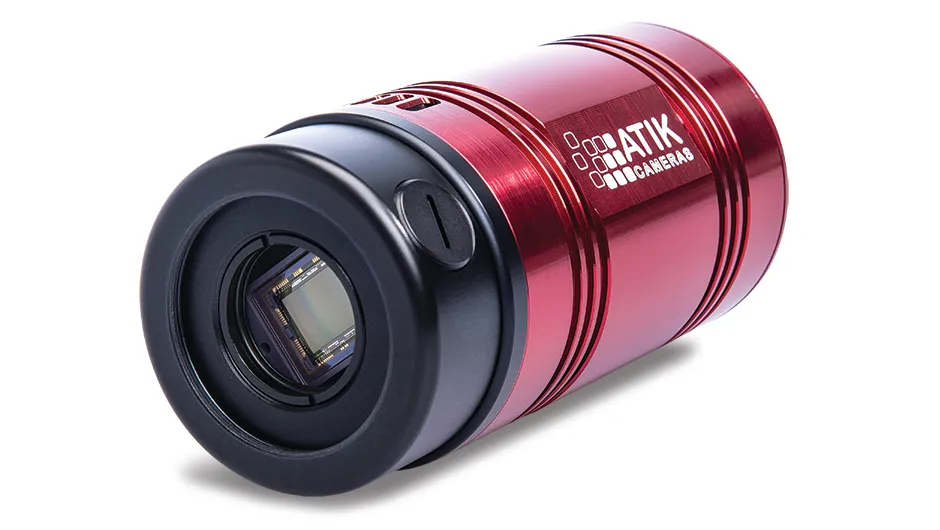
Preparing to image
As we mounted the system, it became apparentthat the 490EX’s power cable is rather short, to the extent that we had to leave it dangling from therear of the camera.
We would much rather havehad it running neatly to the centre of the mountand then down to the 12V power supply to avoidany chance of snagging.
We used MaxIm DL throughout the review period to control the camera and select filters as required.
Our review period took place in late November and, at an ambient temperature of 4.5°, it took the 490EX just two minutes and 18 seconds to reach our cooling set point of –20°C.
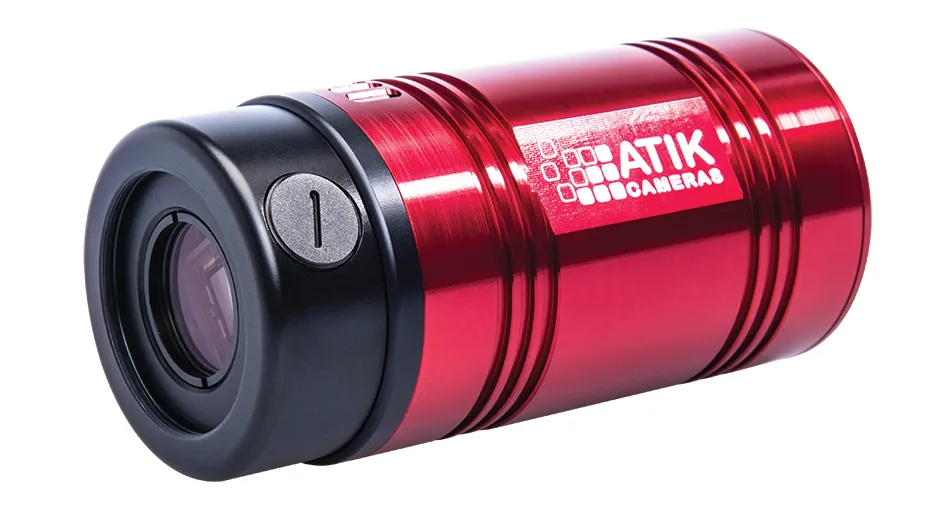
All CCD imaging sensors warm up in use and this increase in temperature produces unwanted artefacts in the image in the form of thermal noise.
Although Sony CCD sensors like the ICX 814 used in this camera are renowned for their low thermal noise output, keeping the sensor as cool as possible improves the quality of the image.
It would be fair to assume that smaller pixels would have less sensitivity than larger ones.
However, in our tests we were very pleased with the results obtained under rather difficult sky conditions and would not consider sensitivity to be an issue with this camera.
The combination of a generous field of viewand high resolution make the 490EX an easycamera to use – certainly a good instrument for anyone interested in starting an adventure indeep-sky astrophotography.
Generous sensor
Many deep-sky objects are fairly large, so you needa reasonably wide field of view to capture them.
The focal length of the telescope and the CCD sensor size determine the field of view, with shorter focal lengthsand larger sensors increasing the size of the field.
The 490EX has a relatively generous sensor size at 12.5x10mm, yielding a 16mm diagonal.
The individual pixels are only 3.69x3.69µm, so the sensor has a totalof 9.2 megapixels on its surface.
Despite its large number of pixels, the sensor’s size means that it can comfortably be used with 1.25-inch filters, which will significantly help to keep the overall cost of your imaging system down.
Used with our 450mm focal length imaging refractor, the 490EX produced an image 1.6° wide and 1.3° deep.
To give a couple of examples, this is wide enough to capture the whole ofthe Witch’s Broom or Pelican Nebulae.
Simple connections
The rear panel has just two connections, a USB Mini-B for connection to a USB 2 port on a computer and a standard 12V DC socket to power the USB connector, internal control circuits and the Peltier cooling module.
Unusually, there is no ST4 autoguiding port.
Short Backfocus
One problem often associated with monochrome CCD cameras with filter wheels is that of spacing when using a refractor with a reducer-flattener.
Most reducer-flatteners are designed for use with a DSLR, so spacing is set at 55mm.
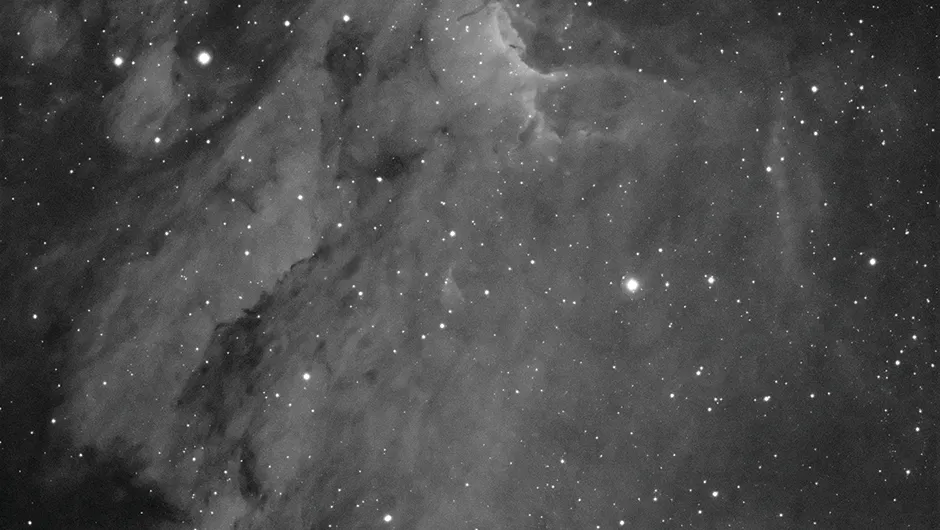
The spacing between mounting face and the sensor on the 490EX is a more forgiving 13mm.
Single-stage Peltier cooling
The 490EX uses a single-stage Peltier thermoelectric cooling system with an internal fan and set point cooling control, which can reduce sensor temperature to a maximum of 25°C below ambient temperature.
Cooling the sensor reduces the unwanted image noise caused by the heat generated during long exposures.
Low-profile body
The 60mm-diameter cylindrical body has a very low profile – this makes the 490EX suitable for mounting on a HyperStar lens unit.
A HyperStar lens replaces the secondary mirror in a Schmidt-Cassegrain to produce a very ‘fast’ telescope.
Software
As well as ASCOM drivers and plug-ins for MaxIm DL, AstroArt and CCDSoft, the 490EX ships with two software programs, Artemis and Dawn.
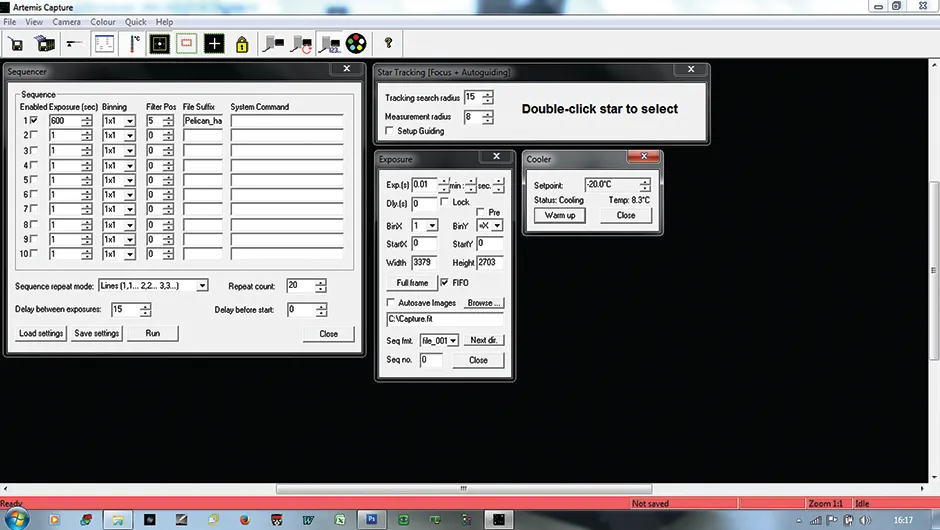
Artemis (above) is a simple but very effective camera control program that includes session sequencing, while Dawn (below) is a slightly quirky image processing package that can calibrate, align and stack your images.
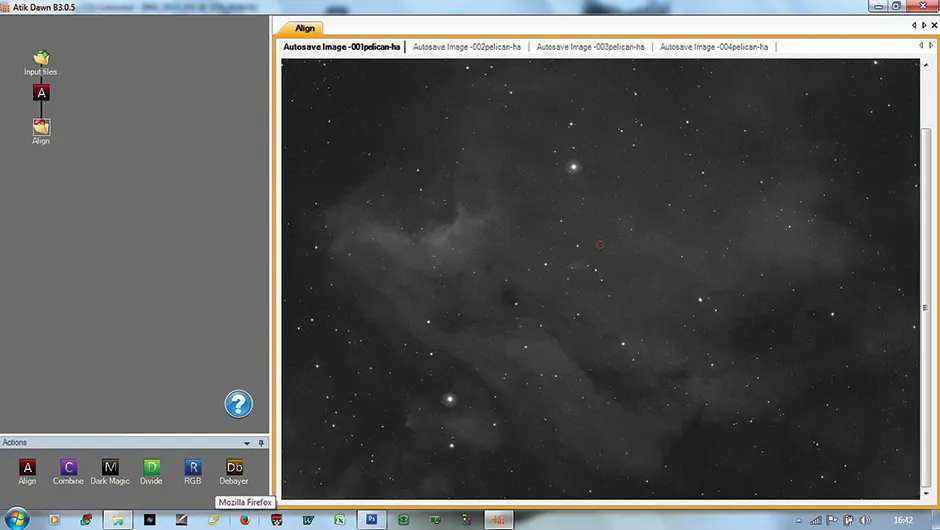
This review originally appeared in the February 2014 issue of BBC Sky at Night Magazine.
